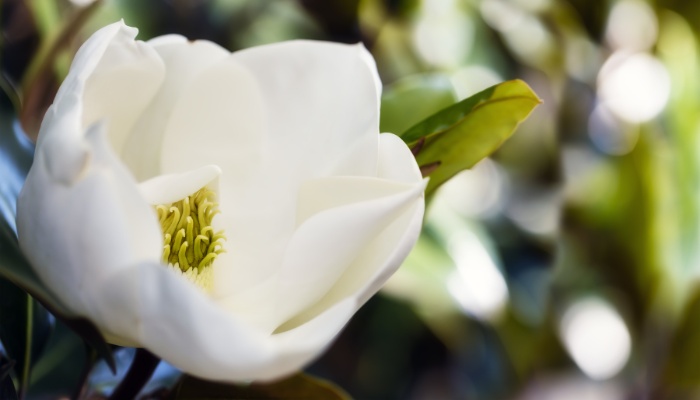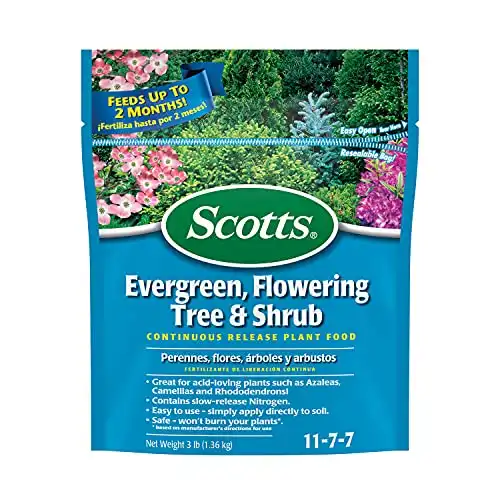Do you admire the appearance of traditional Southern magnolia trees but lack the room or energy to tend to them? Allow us to introduce the ‘Little Gem’ magnolia as a solution.
This dwarf variety was made for modest green spaces, but there’s nothing modest about its beautiful showy appearance! So what can you expect with a Little Gem magnolia?
How big does a Little Gem magnolia tree get? Without pruning to control their size, Little Gem magnolia trees are able to reach about 25 feet tall at maturity and attain a spread of up to 15 feet or more. Most garden-grown specimens will only reach about 15 feet high and up to 10 feet wide, making them perfect for smaller yards.
A lot of gardeners prefer to keep things short and sweet and enjoy the benefits of a small-scale magnolia tree on their property!
Keep reading to learn more about the Little Gem magnolia. We’ll cover everything from its interesting seed pods to its watering needs plus a planting guide, steps on propagating, and more.
There’s no question that the Little Gem is a fantastic tree, but you won’t believe the variety that exists in the world of magnolias. Explore the top contenders in my comprehensive guide, Magnolia Types and Varieties.
Little Gem: The Perfect Magnolia Tree for Smaller Spaces
Also known as the large-flowered magnolia, the aptly named ‘Little Gem’ variety is considered the crown jewel of magnolia varieties and possesses all the charm of a Southern magnolia in miniature form.
These dwarf flowering shrubs are native to moist woodland areas stretching from Texas to North Carolina and are prized for their large leaves and super-sized blooms. Let’s inspect this Little Gem in closer detail below!
| Botanical name | Magnolia grandiflora ‘Little Gem’ |
| Mature height | 15 feet |
| Mature width | 8-10 feet |
| Growth rate | Slow |
| Light preferences | Between 2 and 6 hours of full sun |
| Ideal soil | Moist richly-organic loam/sand/clay medium |
| Watering needs | 3x week for new trees, once weekly during first year |
| Fertilization | Slow-release balanced (10-10-10 NPK) for overall growth |
| Bloom time | Mid-spring to summer |
| Bloom color & fragrance | Cream-white with lemony/floral scent |
| Fall foliage | No fall coloring, leaves remain dark green through winter |
General Appearance
Little Gem magnolia typically grows as a compact and narrow multi-stemmed shrub or small tree with a dense canopy that creates a conical almost column-like shape.
Despite its small stature, this flowering tree is adorned with large spoon-shaped dark-green evergreen foliage that contrasts strikingly with the oversized fragrant flowers of pristine white dotted around the symmetrical canopy.
Growth Rate & Mature Size
This variety has a relatively slow growth rate, achieving 1 to 2 feet within a year. At maturity, the tree stands 15 feet tall with a spread of 8-10 feet, but some specimens may grow up to 25 feet tall over the first 20 years.
The Flowers
Magnolia ‘Little Gem’ produces saucer-shaped flowers measuring up to 12 inches in diameter in cream to pristine white tones.
The blooming period typically begins in mid-spring and lasts throughout summer, and the fragrant white flowers carry a subtle lemony, floral fragrance.
Little Gem Magnolia Leaves & Seed Pods
In stark contrast to the stunning flowers is the large glossy green foliage that has a dark-green surface and a fuzzy felted brown underside.
The leaves of this evergreen tree are up to 6 inches long with a wide spoon shaping and pointed tip, and though they show no fall coloring, they remain dark green throughout winter!
As the blooms fade away, they give way to spherical cone-like fruiting clusters in early to late fall.
As these open to reveal the flesh-coated seeds, they resemble exotic pinecones with bright red seeds protruding from the pods, putting on a colorful show in the fall landscape.
Life Expectancy
When growing conditions are ideal, Little Gem magnolias may live for up to 70 years or more.
Little Gem Magnolia Hardiness & Growing Conditions
To enjoy the large showy blooms and evergreen leaves on your Little Gem magnolia tree, you first need to nail the basics.
Let’s cover their preferred sunlight and soil type in addition to the best growing climate so you can be sure you’re providing exactly what this little beauty prefers.
Grow Zones and Hardiness
Little Gem magnolias are hardy in Zones 7 to 10a. Though it can withstand temperatures as low as minus 10°F, this dwarf variety will struggle in high winds, so provide saplings with garden/horticultural fleece for protection.
These trees tend to be intolerant of many urban pollutants, so consider this before planting. However, they do resist pests and diseases as well as salt rather well.
Sun Requirements
Little Gem magnolias adore a full sun position of 6 hours of direct daily sunlight.
They are also pretty tolerant of semi-shade locations, so they will thrive as long as you place the tree in a location that receives at least 2 hours of direct sun each day.
Soil Preferences
Provided the soil drains well, Little Gem magnolias are equally happy in sandy, loamy, or clay soil types and will fare well in neutral to slightly acidic soil pH.
They tend to do best in moist and richly fertile mediums, so be sure to mix plenty of organic matter – like compost and aged manure – into the planting hole.
Be aware that this tree is generally intolerant of soil extremes, so do not go overboard when enriching the soil.
Always check upon watering that the soil is well-drained and does not stagnate as waterlogged soil will spell poor health for these trees.
How To Plant a Little Gem Magnolia Tree
Although trees can be planted any time of year, spring and fall are ideal times to plant the Little Gem as the tree will have ample time to focus on root development before harsh conditions hit.
1. Dig a hole 3-4 times the diameter of the root ball or container and roughly the same depth.
2. Dampen the soil base, and lay the sapling on its side to gently loosen the existing dirt and nursery pot from the root system.
3. Place the tree in the center of the hole, and begin backfilling around it. Stop to give the roots a thorough soak. Once fully drained, continue filling in the hole with the remainder of the soil.
4. Tamp down the soil firmly but gently, and add a 2-3 inch layer of mulch (compost, pine straw, etc.) around the base to conserve moisture and suppress weeds. Take care not to let the mulch material touch the trunk.

Little Gem Dwarf Magnolia Tree Care
After providing the best location and growing medium for your Little Gem, help it grow into a robust and well-established tree in your landscape.
You can do this by providing an ideal watering and fertilizer routine in addition to knowing how (and when) to prune.
Watering
Aim to water newly planted trees about 3 times a week or enough to maintain moist soil. Gradually reduce this to once a week during its first growing season.
After this, trees should start to become established, requiring only natural rainfall and weekly watering during hot, dry spells throughout the summer.
Fertilization
Stimulate flowering and overall growth by providing a balanced, slow-release fertilizer in early spring (i.e., a 10-10-10 nitrogen, phosphorus & potassium ratio or something similar).
If you are planting a hedgerow of Little Gem magnolias and desire bushy growth, use a fertilizer with a high-nitrogen NPK ratio such as 20-5-20 or 12-4-8.
I’ve found this one to be excellent, and my magnolia blossoms are always gorgeous!
Pruning
Once the blooms have faded, prune out dead, broken, or diseased branches as necessary using clean, sharp pruning shears. You can also prune growth lightly at the top if you wish to train your Little Gem tree into more of a triangular shape.
Pests & Diseases
In poor care conditions, you may find sap-sucking thrip and scale insects attracted to the foliage of your Little Gem magnolia.
These pests eat holes in the leaves and flowers, leaving behind a sticky residue. You can manage them with a spray of homemade insecticidal soap.
Your tree may also suffer from Nectria canker growths due to bacteria entering through bark wounds or leaf scars. This disease is transported via fungal spores carried from the ground up by wind and rain.
Ensure the base of your trees are clear of dead flowers and leaf litter as this can harbor bacteria, and keep your tree well-watered and fertilized each spring.
Control canker with a broad-spectrum fungicide, and prune off any affected limbs.
Propagating Little Gem Magnolia
Little Gem magnolia trees can be propagated via seeds and cuttings, but as the former is time-consuming and unreliable, cuttings are the simplest method…
- Using a clean sharp grafting knife, take a 6-8 inch cutting from a healthy section of stem.
- Next, remove all but two top leaves on the cutting to prevent nutrient competition, and dip the cutting end into rooting hormone powder to stimulate growth.
- Finally, place the cutting into a nursery pot filled with 50/50 potting mix and perlite for good drainage, and water well.
- Place a plastic bag or humidity dome over the cutting, and keep it in a warm semi-shaded location. Roots should form within a month or less.
Landscape Ideas & Wildlife Value
The large white blooms make Little Gem a knockout specimen tree in your yard or planted on either side of your home.
Left untrimmed to reach higher heights, this dense-canopy shade tree can also make a great privacy screen or hedge. On the flip side, you could plant it in a large container and use it as a focal point.
The closely packed foliage also provides a great winter cover for wildlife, so expect Little Gem to be visited by squirrels, rabbits, and a variety of bird species!
Where To Buy Little Gem Magnolia (Dwarf Southern Magnolia)
While you might find Little Gem magnolias for sale at local nurseries, this stunning variety is easily sourced through online tree nurseries and can be shipped in sizes ranging from 1-foot saplings up to 5- to 6-foot specimens.
Check out some of the most trusted tree nurseries below:
Related Questions:
Are Little Gem Magnolia Trees Messy?
Magnolia trees are generally messy due to their large abundant blooms and leaves that create a lot of debris during leaf and flower drop.
However, as Little Gem is a dwarf version of the larger standard magnolia trees, the amount of leaf litter is considerably less.
How Long Does It Take a Little Gem Magnolia To Mature?
Little Gem magnolia trees take roughly 10 to 20 years to reach their mature height of around 25 feet tall and 15 feet wide.
This variety is a fairly slow grower, attaining between only 1 and 2 feet of growth per year, but this steady growth rate makes them ideal for growing in small container gardens.
Little Gem: A Stately Evergreen Flowering Tree
In summary, the Little Gem magnolia tree is perfect for small gardens or growing in containers on the patio and packs a huge punch for its compact stature with gleaming white blooms set against glossy green leaves.
The tree makes a beautiful addition to small yards that need some evergreen interest.
Whether you treat it like a small tree or large shrub, this hardy tree is a low-maintenance magnolia variety that only needs moist, richly organic soil to thrive, a little wind protection, and yearly fertilizer to help it grow strong.
Happy planting!
Impressed by the Little Gem variety? There are more amazing magnolias just waiting to be explored! Learn about these next:
- Magnolia Butterflies Tree: Full Guide To Planting and Care
- Southern Magnolia Tree: Complete Planting and Care Guidelines

